
John Foster|Accidental Mysteries
May 29, 2015
To Catch a Fish
What does it take to catch a fish? That is a question that has been confounding fishermen since the beginning of time. The reputation of a good lure can spread among a fishing community faster than a duck on a junebug. I happen not to be a fisherman, so forgive my assumptions—but it seems to me that a fish will not bite unless it damn well feels like it. I am reminded of a time when, as a boy, my brother was fishing—without luck—in a pond. I was there as an observer, really—just hanging around. Finally, out of worms and the sun high, on a lark he attached a blade of grass to his hook and threw it in. It was a “why not” kind of moment before giving up for the day. Lo and behold, he instantly caught a small Bluegill. He pulled it out and we both stared at it in astonishment. To this day, some fifty years later—we laugh about that moment.
The circumstances involved in landing a fish with a lure are so complex and that it is as much science as magic. The right prescription to catch a fish depends on the type of lure, the way it moves, the color, vibration, shininess, and the way the fisherman uses his rod to create a smooth or staccato rhythm—all the while hoping his combination of skill and luck results in success.
Lures are typically store bought, with multiple hooks, and the varieties are infinite. The lures you see here are as much folk art as they are functional devices to attract fish. Fetish like, and highly decorative, some may roughly resemble the markings found on a small fish, but the majority are miniature examples of expressionist art.
Most of these were found on the blog of 31-year old artist-collector Chance Dunlap, who teaches sculpture and 3D Design at Southeastern Oklahoma State University. Dunlap believes that older, handmade lures are unquestionably a genre of folk art; a form that encapsulates design, craft, and art. A professional artist in his own right, Dunlap also makes and exhibits lures, two of which you will see below and nearly seventy-five more you can find on his website.
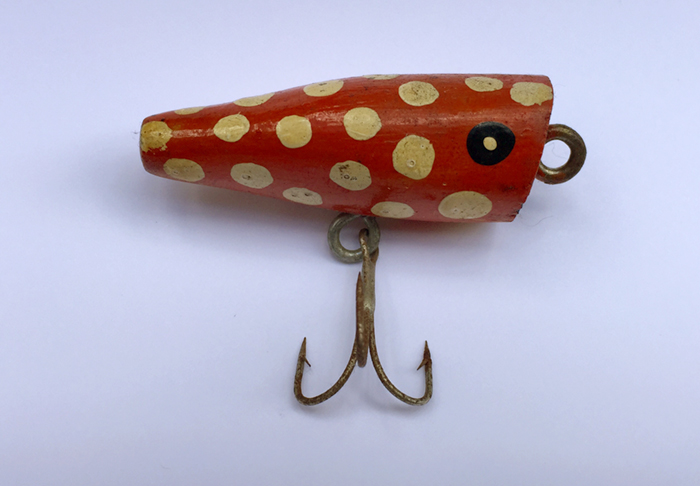
Hand-made lure with treble hook. Collection of John Foster.

Hand-made lure with two treble hooks and spinner. Collection of John Foster.
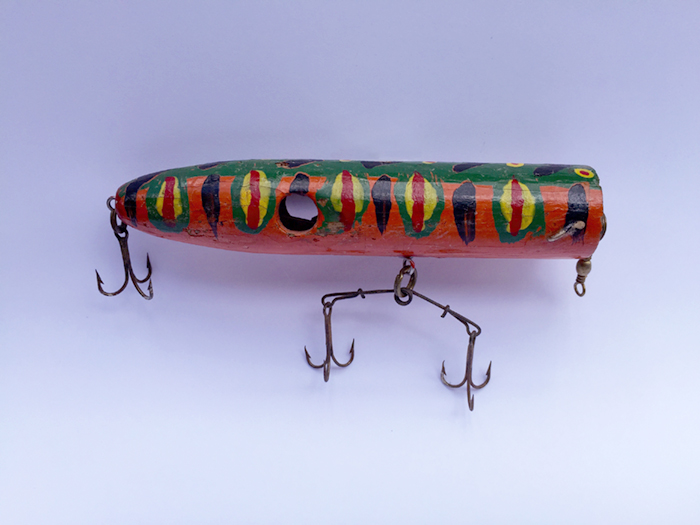
Unusual hand-made lure with multiple treble hooks and hole in body. Collection of John Foster.
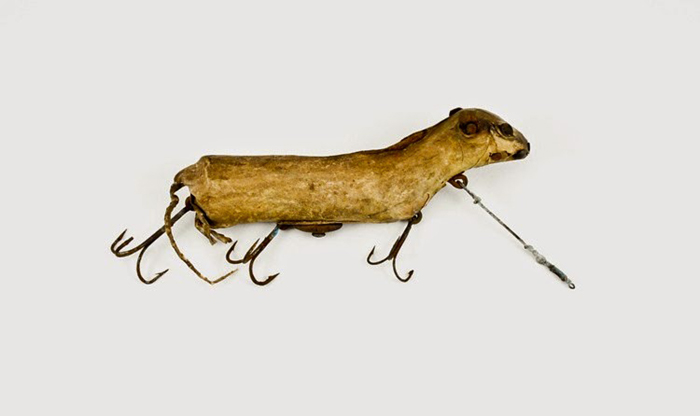
This is a strange little folk art rat-gopher type lure, which sold at Lang’s Sporting Auction Oct. 23, 2011. (Chance Dunlap)

This is most likely a re-fashioned lure from an existing store bought one that was similar. The paint is very individualized and quite nice. (Chance Dunlap)
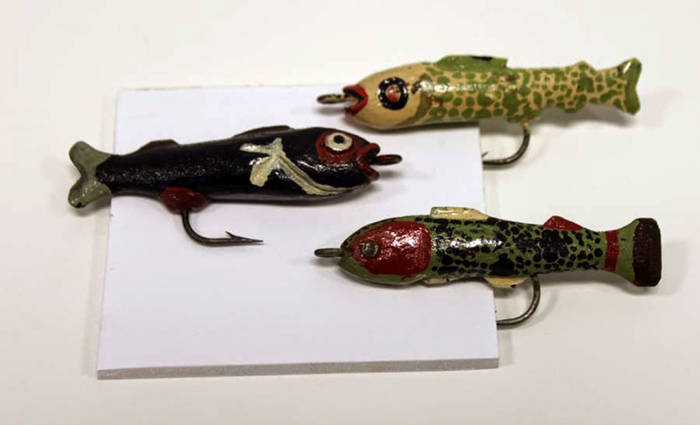
Folk Art Fly Fishing Lure Trio. This is a trio of fly rod size lures, probably made by the same hand. Each measure about 2.5 inches. They are carved and painted wood with inset hooks. (Chance Dunlap)

A group of handmade lures found at an estate sale in Kansas. (Chance Dunlap)
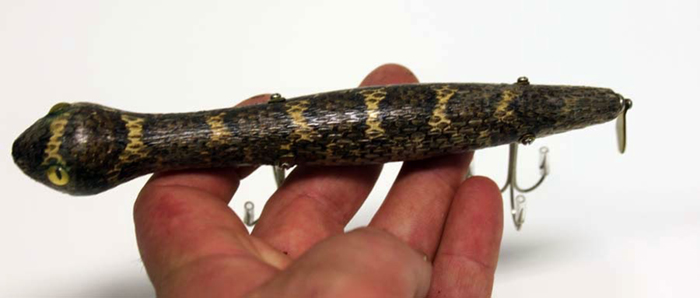
This is a snakeskin-covered lure purchased at auction by Chance Dunlap. Little is known about the maker, but it appears to be a carved wood body covered in snakeskin. It features well-made brass hardware and large taxidermy glass eyes. (Chance Dunlap)

Baby muskrat fishing lure, attributed to Bud Stewart. (Chance Dunlap)
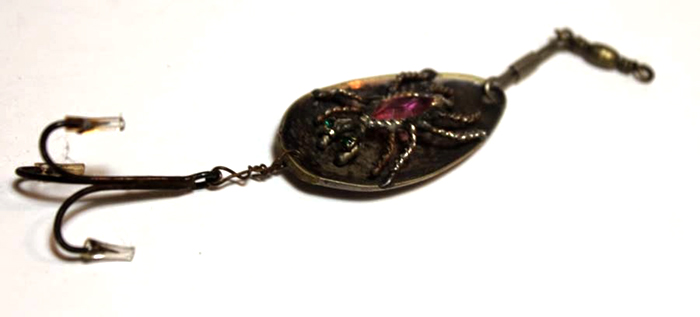
Unusual “alien-like” spoon lure. The maker crafted it from an old silver spoon and it has a jewel bodied bug soldered in it. The spoon part measures just about 2 inches. (Chance Dunlap)

Emil E. Vessely was a Wisconsin lure maker, and the only examples of his work I know of are all globe/rotary head style lures. These lures are considered old and possibly from the 1920s? All of his lures seem to be yellow with gold spots? He also made a really interesting double-headed globe lure. (Chance Dunlap)

Here is a large wood-bodied, musky frog lure with a unique cut brass prop. The rear hook of the lure was crafted by grafting 3 single hooks together with wire. This lure has great paint and wonderful character. The maker of this lure had high hopes for what this plug would attract! (Chance Dunlap)
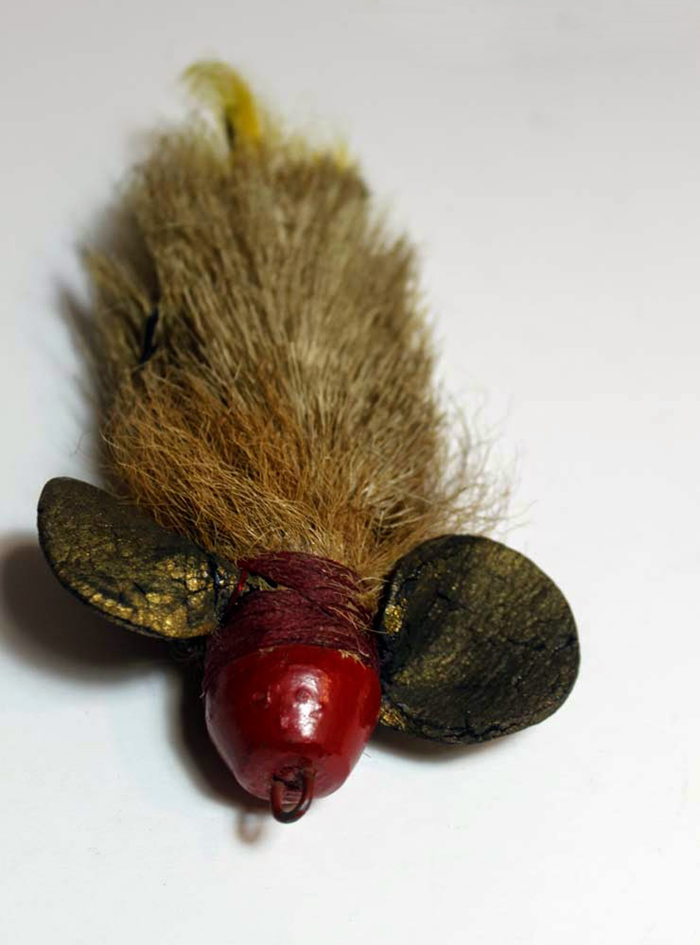
Large, folk-art muskie lure, about 7 inches in length. The leather ears are 3-1/2 inches wide and made of very heavy leather. The body appears to be a dowel of some sort with 2 single hooks embedded on the sides and a large rear treble hook. The body is covered in what looks like Elk hide with some yellow nylon material at the rear. The anonymous maker wrapped the cording around the head and ears. (Chance Dunlap)
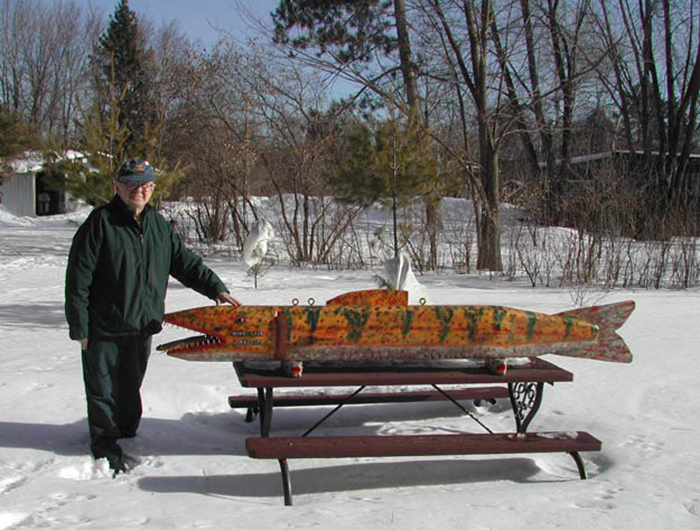
Fish decoy maker Otis Lael (1929 – 2005) is shown standing next to his giant fish decoy, made to attract Muskie and Gar. The fish measures over 11 feet long and weighs over 300 lbs. It is filled with lead ballast. There is a hand carved frog inside its mouth and it has metal fins, tail and teeth. This photo was taken in February of 2005 in Otis’ back yard in Minnesota. (Chance Dunlap)

Ed Slominski of Wisconsin made quite a few lures during his time as a carver. Rotary head-globe types were the most common. He made single heads like the example shown here, but also crafted a double-headed version as well. He made some other lure styles, but they are very hard to find. This example is nearly 7 inches long. He used cedar wood for the bodies. A nice touch to these lures is the fact that he had custom-made surface style hardware for the belly hooks. His painting style is very nice and “painterly.” This example is a green tiger stripe.

This is a c.1980s Pop Dean crappie lure. The later Dean lures were made more for the tourist trade than anything else, but still possess much appeal. The Dean brothers are legendary musky hunters and any lure made by their hands in desirable.
Observed
View all
Observed
By John Foster
Related Posts
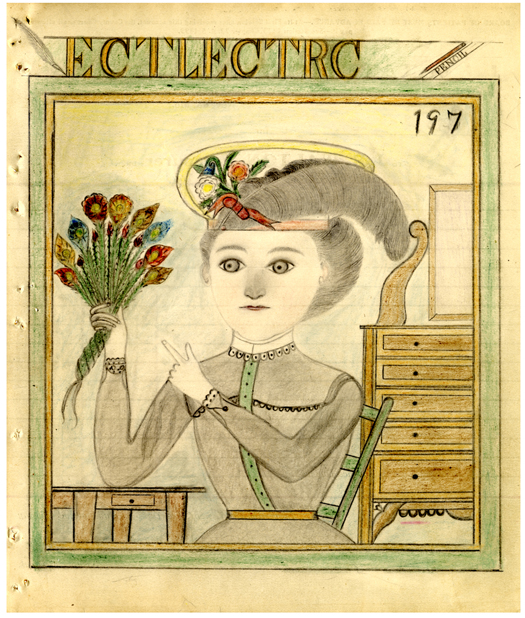
Accidental Mysteries
John Foster|Accidental Mysteries
The Remarkable Mr. Deeds
.jpg)
John Foster|Accidental Mysteries
Doug Rickard: N. A.
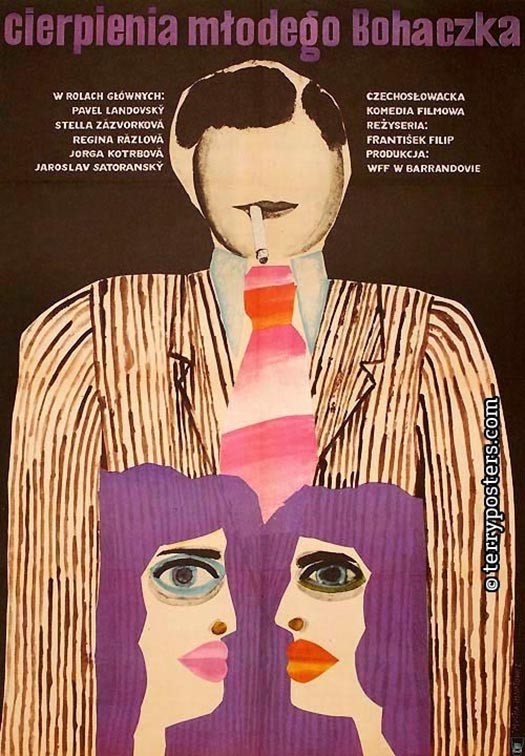
Accidental Mysteries
John Foster|Accidental Mysteries
An Archive of Czech Film Posters

Accidental Mysteries
John Foster|Accidental Mysteries
A Visual History of Lunchboxes
Recent Posts
“Dear mother, I made us a seat”: a Mother’s Day tribute to the women of Iran A quieter place: Sound designer Eddie Gandelman on composing a future that allows us to hear ourselves think It’s Not Easy Bein’ Green: ‘Wicked’ spells for struggle and solidarity Making Space: Jon M. Chu on Designing Your Own PathRelated Posts

Accidental Mysteries
John Foster|Accidental Mysteries
The Remarkable Mr. Deeds
.jpg)
John Foster|Accidental Mysteries
Doug Rickard: N. A.

Accidental Mysteries
John Foster|Accidental Mysteries
An Archive of Czech Film Posters

Accidental Mysteries
John Foster|Accidental Mysteries

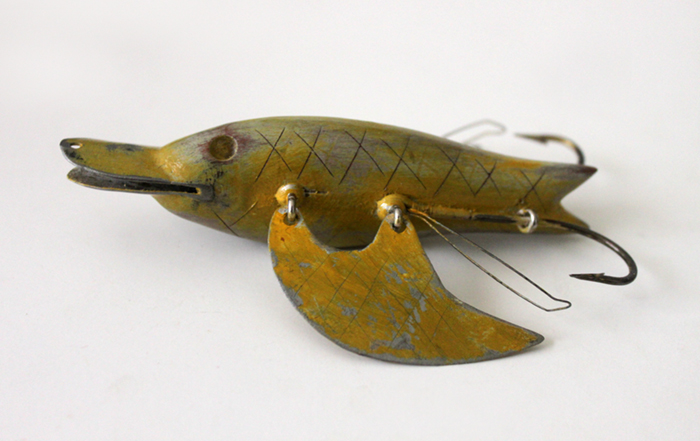

 John Foster and his wife, Teenuh, have been longtime collectors of self-taught art and vernacular photography. Their collection of anonymous, found snapshots has toured the country for five years and has been featured in Harper’s, Newsweek Online and others.
John Foster and his wife, Teenuh, have been longtime collectors of self-taught art and vernacular photography. Their collection of anonymous, found snapshots has toured the country for five years and has been featured in Harper’s, Newsweek Online and others.